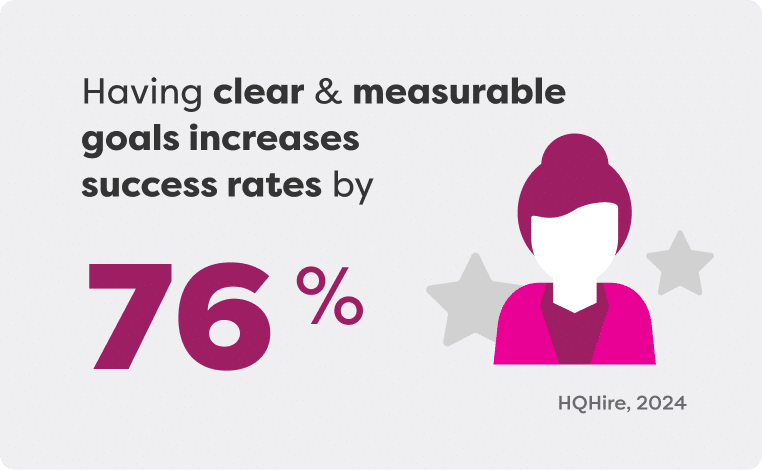By now, we are all well aware of the importance of corporate culture in engaging employees and increasing their retention over the long term. However, the benefits of a strong company culture go far beyond employee motivation: creation of a strong employer brand, improved sense of belonging, impact on HR marketing and recruitment…
Do you want to know more about the impact your culture can have on your organizational performance? Here is everything you need to know.
Understanding the Link Between Culture and Performance
The link between corporate culture and organizational performance is not always obvious.
And yet, statistics show that prioritizing corporate culture boosts an organization’s revenue by 33%. Here are a few explanations:
- Growth and productivity: trends that organizations and employers are looking for, they are the company’s ultimate goal. This pursuit of performance is intrinsic to every company and is not a negative aspect, as long as we bring this ambition to life in a constructive, effective and people-centric way.
- Organizational culture and values: what employees look for in their working lives, what motivates them on a daily basis and drives them to improve their productivity.
A strong culture supports employee performance, and therefore boosts company productivity. Striking a balance between these two elements creates a synergy between employee well-being and productivity.
Key Elements of Culture that Support Performance
Specific aspects of your corporate culture are particularly crucial to improving organizational performance, and you need to focus your efforts on these key elements:
Corporate Mission
The corporate mission is the most important factor in employee engagement. It helps them understand why they work and dedicate their time to specific tasks and projects every day. It also directs every single effort towards a common, motivating goal. Make sure this mission is clear, detailed and shared with everyone in your organization.
Core Company Values
Employees, and especially the new generations of workers, want to belong to a group with which they identify and in which they can envision a future for themselves. 70% of Generation Z job seekers want to work for a company that shares their values.
Corporate values are therefore essential to motivate your teams to give their best every day. On top of defining your shared values, you need to bring them to life in the working environment. If you are struggling to do so, we’ll share a few tips to help you with you later in this article!
Internal Communication
The importance of internal communication seems self-evident, yet our workplace communication is ineffective or negative 80% of the time. On the upside, clarifying objectives increases the chances of success by 76%.
It is essential to communicate not only often, but also effectively, with your employees. Communicating your corporate mission increases motivation. Detailing and justifying that mission and what it entails supports performance.

Employer-employee Relations
Of course, managers must possess essential qualities to support the performance of their teams. However, it’s also crucial to build a relationship between employers and employees to create engagement and unite your workers around common goals.
Ask yourself this question: What is the promise made to employees in return for their investment in your company? The promise must be shared between employers and employees.
The promise must be more than an exchange of work for pay. If you want your employees to give you their best, you have to offer them a positive working environment in which they can grow and thrive.
Tips to Create a Company Culture that Supports Productivity
Here are a few practical tips to ensure that your corporate culture supports employee performance:
1. Control growth
The ultimate goal of every business is to grow and develop over time. However, growth must not come at the expense of employee well-being. It is therefore essential to control growth by pursuing realistic, achievable goals, and encouraging healthy performance.
To achieve this, individual objectives must not only be aligned with organizational goals, but must also be presented and explained to your teams so that they understand the meaning of their daily work. If you demand productivity, you need to support it by presenting the importance of everyone’s projects to the company’s growth.
2. Understand and communicate your decisions
When you make organizational decisions, you need to make sure you understand them and how they fit in with the company’s mission. It is also crucial to communicate each of your decisions to your teams with complete transparency, while emphasizing the place of employees in your HR strategies and the proper implementation of changes. This communication can take place:
- During a company-wide meeting at a specific location, during which you will highlight organizational objectives and strategic shifts;
- During an annual meeting or review, which represents a great opportunity to strengthen team cohesion;
- At an all-employee meeting, during which you answer all questions and schedule individual or small-group discussions afterwards.
As you can see, a simple email or filmed speech by the company’s CEO is not enough to communicate organizational decisions that have an impact on employees’ daily lives. Take the time to present your action plans, discuss them as a team and individually, and survey your employees to stay on course.
3. Bring your culture to life
We’ve already mentioned the importance of shared values for an effective corporate culture. But once you’ve developed your organizational culture and defined your core values, how do you bring them to life every day in the workplace?
Every conversation you have and every action you take must fit into your organizational value system and reflect the company’s culture. If you claim to offer an environment that emphasizes collaboration and teamwork, you need to apply this vision on a daily basis.
If you don’t, you risk losing the trust of your employees. Think about the qualities you want to emphasize, and understand how your day-to-day decisions and discussions support these core values and make your corporate colors shine.
4. Balance the positive with the negative
We all know that recognition of performance, appreciation of contributions, rewards and affirmation are essential aspects of employee engagement. However, it’s crucial to conduct the more difficult conversations transparently. These discussions often help in aligning individual objectives with the pursuit of organizational productivity, and in conveying a healthy and effective vision of performance to employees.
To build an effective and productive culture, we need to be able to talk to each other honestly, understand each other and walk in the same direction. Poor communication is responsible for all misunderstandings and a large proportion of productivity problems.
If you only share the positive and fail to point out what’s not working, your employees can’t understand what you expect of them and improve accordingly. Constructive feedback, whether positive or negative, is the key to progress!
5. Make happiness at work a top priority
We spend twice as much time with our colleagues as we do with our families. If we’re unhappy at work, we’re unhappy in our personal lives, leading to a vicious circle of unhappiness and loss of energy and motivation.
Happiness at work should be one of your top priorities. Employees need to understand what they’re working for, and the mission to which they’re contributing on a daily basis. Here are our tips for improving your teams’ well-being:
- Create a positive, collaborative work environment where everyone can share their ideas and feelings;
- Encourage your employees to actively participate in the practice of your organizational values, so that they become your organic ambassadors;
- Send regular employee surveys to measure their satisfaction and factor their experience into your action plans;
- Encourage transparent, honest and empathetic communication between employees;
- Offer development and learning opportunities that take into account individual ambitions and organizational objectives;
- Keep your promise to employees by enacting your culture and values!
In Conclusion
Organizational culture must go beyond a simple image projected by the company or a promise made to new recruits. It must be practiced daily, effectively communicated to employees, and understood by all to support healthy growth and performance and become the pillar of your success.
Do you want to streamline employee performance management in your organization?
Folks HR is the best performance appraisal software for SMBs!

